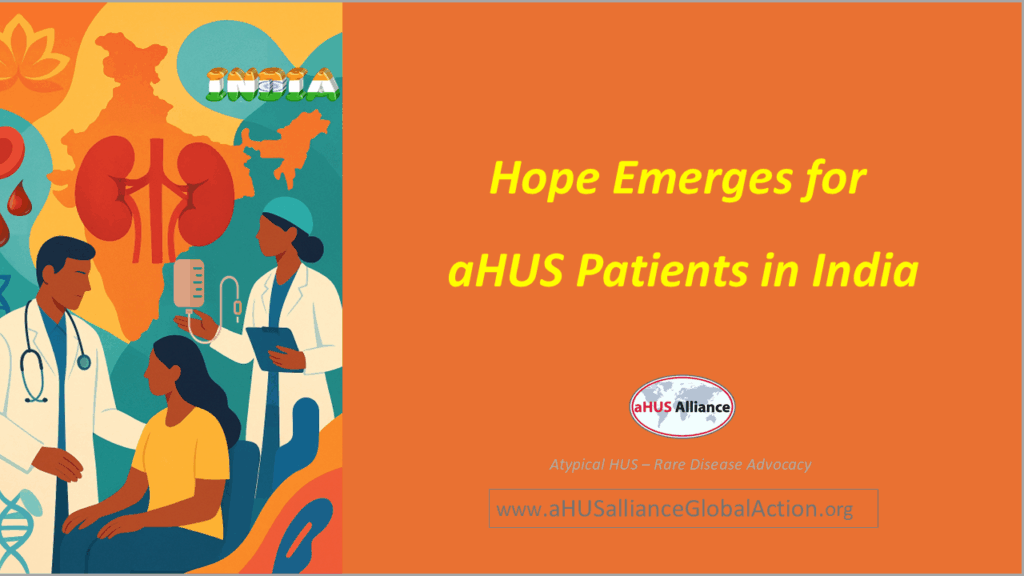
Hope Emerges for India’s aHUS Patients After Years of Struggle
After years of waiting in the shadows of India’s healthcare system, patients with atypical hemolytic uremic syndrome (aHUS) are finally seeing a glimmer of hope. For the first time, a life-saving drug has been approved in India, marking what could be the beginning of a new chapter for those living with this very rare and life-threatening disease.
What’s aHUS and Why Does It Matter?
Imagine your body’s immune system going haywire and attacking your own blood vessels. That’s essentially what happens with aHUS—a rare condition where tiny blood clots form throughout the body, potentially damaging kidneys and other vital organs. It affects roughly 2-3 people per million, which indicates there may be an estimated 2,500 atypical HUS patients in India. Without proper treatment, many patients will face kidney failure and need lifelong dialysis.
The Breakthrough: Eculizumab Finally Arrives
In January 2025, India’s drug regulator (CDSCO) officially approved eculizumab (brand name Soliris) for treating aHUS. This approval came after an initial recommendation in May 2024, representing nearly a decade of advocacy work by patient groups and healthcare professionals.
The approval clears the way for AstraZeneca to start marketing and selling the drug in the country, though the story doesn’t end there. As Kamal D. Shah, founder of Atypical HUS India and co-founder of NephroPlus dialysis centers, points out on his blog: “What remains to be seen though—and this is critical for a country like India—is what the drug will be priced at by the company. This is what will dictate if anything at all changes for aHUS patients.”
The Real Challenges: Access and Affordability
Drug approval is just the first hurdle. Several significant challenges remain:
The Price Problem: In developed countries, eculizumab is one of the world’s most expensive medications. Each vial costs several lakhs of rupees, and patients need doses every two to four weeks—potentially for life. For most Indian families, this is simply out of reach.
Limited Access Points: Only “Centres of Excellence” will be authorized to prescribe this drug, likely including reputed institutes such as AIIMS and PGI Chandigarh. With just a handful of such centers across the vast country, many patients will face significant travel barriers. (The Atypical HUS India Foundation listed these centers approved by India’s National Program for Rare Diseases or NPRD.)
Bureaucratic Maze: The approval is subject to AstraZeneca India conducting Phase IV clinical trials to establish safety and effectiveness in the Indian population, though there’s no clarity yet on how this will be done and how long it will take. As aHUS Alliance Global Action has noted, national policies on rare disease funding heavily depend on drug cost, driving how governments set national reimbursement policy and potentially limiting the clinician’s ability to follow consensus-based best practices for patient care.
A Lifeline: Government Support Expands
There’s good news on the policy front. The Delhi High Court ordered the creation of a ₹974 crore National Fund for Rare Diseases for 2024-26, and the Indian government recently expanded their Rare Disease Program to increase the grant provided under this scheme from Rs. 20 lakhs to Rs. 50 lakhs.
While this increased support is welcome, patient advocates point out that ₹50 lakhs might only cover a few months of treatment for some aHUS patients, depending on their age, weight, and specific genetic mutation.
Advocacy and Shared Information Matter
The journey to this point has been long and frustrating. Speaking from personal experience as someone who has been on dialysis since 1997 due to aHUS, Shah wrote: “After all these years of despondence, there is finally some hope for us. Clearly, we are not out of the woods yet. But there is hope that a path will emerge soon.”
On 18 Nov 2025 NephroPlus held a webinar which brought together leading nephrology experts to help clinicians better diagnose and treat this complement-mediated rare condition. Shared information covering diagnosis, clinical challenges, and current treatment insights build the crucial steps for both awareness and for optimizing aHUS patient outcomes. Watch the webinar video HERE.
Looking Ahead: More Than Just One Drug
Beyond eculizumab, there’s additional hope on the horizon. Two other complement inhibitors—crovalimab and iptacopan—are currently undergoing clinical trials in India. These newer medications could offer more convenient dosing schedules and potentially lower costs.
The aHUS India Foundation has launched a newsletter to keep patients informed about these rapidly evolving developments. They’re encouraging patients to register with their organization, share their stories, and stay connected as the landscape continues to change.
The Bottom Line
For families affected by aHUS in India, 2024-2025 represents a turning point after years of having no approved treatment options. But as Dr. Arvind Bagga and colleagues noted in their 2025 article “Eculizumab for Atypical Hemolytic Uremic Syndrome: Guidance for Developing Countries”, the real test will be whether patients can actually access and afford these therapies.
The next few months will be critical in determining whether this approval represents genuine progress or remains just a headline. Will pharmaceutical companies price the drug affordably? Will the government fund structure work efficiently? Can the Centres of Excellence handle the expected demand?
For now, India’s aHUS community is cautiously optimistic, watching closely as these questions unfold. After decades of being told there was no hope, even having these questions to ask feels like progress.
For more information or to connect with the aHUS community in India,
visit the Atypical HUS India Foundation at www.ahus.in or
check out Kamal D. Shah’s blog at www.kamaldshah.com for updates on treatment access and advocacy efforts.
Our content creation process includes reviewing publications, exploring interviews, and gaining
insights from information across social media and within news articles in the public domain. Any
use of AI generated information has thoroughly reviewed and edited by to ensure factual accuracy.

